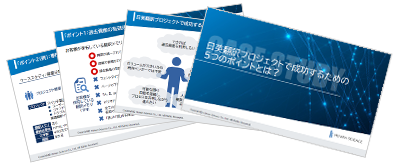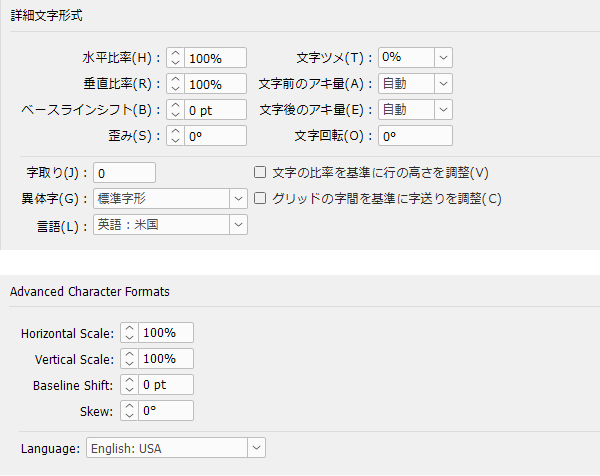
Have you ever heard the term "translation proofreading"?
While many may be familiar with the word "translation," there are likely many who wonder, "What is translation proofreading?" I will explain in detail what translation proofreading is and what kind of work it entails.
- Table of Contents
-
- 1. What is translation proofreading?
- 2. What is the necessity of translation proofreading?
- 3. Types of Translation Proofreading
- 4. Can translation proofreading be done with LLM (Generative AI)?
- 5. Points to Consider When Requesting Translation Proofreading
- 6. Commitment to Translation and Proofreading (Review) in Human Sciences
- 7. Introduction of Translation and Proofreading (Review) Cases in Human Science
- 8. Summary
1. What is translation proofreading?
Some people may think that once the translator has completed the translation, everything is finished. However, for high-quality writing, translation alone is not enough. After the translator has completed the translation, another worker (the proofreader) checks for accuracy and naturalness and makes corrections as needed; this process is called translation proofreading.
Since a different person will review all the translated text again, it will naturally incur additional costs and labor. However, translation proofreading is an essential task to maintain the quality of the translation.
Next, I will explain why translation by the translator alone is insufficient.
2. What is the necessity of translation proofreading?
Can a single translator confidently say, "This translation is perfect" when it is just a "literal translation"?
Everyone has probably experienced making typos or writing unclear sentences in documents or emails. It is quite normal to read through them several times to correct mistakes in order to prevent such issues. For important documents, it is also common to have multiple people review them.
The same applies to translation. If only one translator has completed the translation, there is a possibility that errors remain even if the translator has performed a self-check. Therefore, to maintain the quality of the translation, a process called "translation proofreading" is necessary, where someone other than the translator reviews the work. In our translation projects, this translation proofreading process is included. By having multiple people involved, we improve translation accuracy and ensure stable quality.
Essential Quality Assurance for Global Business Expansion
Have you ever heard the term ISO? ISO stands for the International Organization for Standardization, which is a non-governmental organization. The main role of ISO is to establish and manage international standardization rules and standards, providing global standard specifications in various fields.
Obtaining ISO certification is proof that the company meets the international standards set by ISO.
In translation services, there is a standard known as "ISO17100." The requirements set forth by "ISO17100" mandate that a "bilingual check" process is essential to guarantee translation quality. This "bilingual check" refers to the same work that has previously been described as "translation proofreading."
In other words, from the perspective of providing translation services that meet international standards, translation proofreading is essential.
Difference between Proofreading and Editing
We may digress a bit, but have you ever heard the term "review," which is very similar to "proofreading"?
Both "proofreading" and "reviewing" refer to the process of scrutinizing the content of documents, but the perspectives for scrutiny are different.
Proofreading: The process of correcting errors in text and writing. This includes correcting typographical errors, omissions, and spelling mistakes.
Review: The process of verifying the accuracy of information within a document and correcting any inaccuracies.
Looking at this definition, translation proofreading corresponds to "proofreading" as stated.
3. Types of Translation Proofreading
Review
We check whether the meaning of the original text and the translated text match, whether the usage is correct in the target language, and whether the text reads naturally, making corrections as necessary. This process of comparing the original and translated texts is also referred to as "review" or "cross-checking."
This explanation alone makes it difficult to imagine what specific checks are performed and what needs to be corrected. For example, in the case of Japanese-English translation, the proofreader checks and makes corrections to the translated text from the following perspectives.
・Are there any mistranslations?
・Is it natural in English? (For example: Is the word order natural? Is it not redundant? Is it easy to read?)
・Are there any spelling mistakes?
・Are there any grammatical errors?
・Is the formatting consistent, such as expressions and punctuation?
・Is the capitalization appropriate (for proper nouns, titles, etc.)?
・Is there consistency in terminology?
・Is there consistency in style?
This "review" is the most fundamental method in translation proofreading, and the standard translation process consists of "translation + review." The "review" is conducted by a native speaker of the source or target language.
Native Check
"Native check" refers to proofreading and editing done by a "native" speaker. It involves having a worker whose native language is the target language (in the case of Japanese to English translation, English) review and make corrections to the translated text.
The check points are almost the same as the aforementioned "review", but the difference is that the check is conducted only on the translated text without referring to the original text. Therefore, the check points such as "whether it has the same meaning as the original text or if there are any mistranslations" are not included.
Native checks are effective for documents that require natural and readable expressions, as well as strict accuracy.
For example, in business documents and academic papers, adding this "native check" process in addition to the aforementioned "review" provides more assurance.
Introduction to Translation and Proofreading Samples
Now, let's take a look at the differences in the translated text when proofreading is not included versus when it is included.
No translation proofreading
The following is an example of Japanese to English translation without the proofreading process.
English: By registering this license to a device listed below, the SFP+/SFP shared port can be used at 10Gbit/s (SFP+).
This text has a continuation, and after this, there is a list of "devices for setting this license." Since the list contains multiple devices, the translation of "device" should be in plural form, but the translator mistakenly translated it as the singular "a device." This is incorrect as it stands.
Translation and proofreading available
The following is an example of Japanese to English translation without the proofreading process.
English after translation proofreading: By registering this license to the devices listed below, the SFP+/SFP shared port can be used at 10Gbit/s (SFP+).
The proofreader corrected "a device" to "the devices" (plural). With the translation proofreading, it has become the correct English translation.
4. Can translation proofreading be done with LLM (Generative AI)?
Recently, LLMs (Generative AI) have become a hot topic. Some people may be having their written texts checked by LLMs or asking LLMs to draft email messages for them.
"If an LLM can do many things, it might also be capable of translation proofreading." We share this belief and are engaged in the development, consideration, and verification of tools for utilizing LLMs. However, at this point, it is still difficult to entrust all translation proofreading to LLMs. Below are examples that LLMs could not handle.
Original: The newly provided masking function allows part of the information, for example confidential information such as personal information, to be hidden during document digitization, reducing the risk of information leakage and enhancing security.
Translation: The newly provided masking function allows part of the information, for example confidential information such as personal information, to be hidden during document digitization, reducing the risk of information leakage and enhancing security.
The LLM proofreading results for the above translation are as follows.
LLM Correction Translation: The newly provided masking function allows part of the information, for example confidential information such as personal information, to be hidden during digitization, reducing the risk of information leakage and enhancing security.
Reason for the LLM's correction: The part of the original text that says "data conversion" is translated as "document digitization," but the original "data conversion" is sufficiently translated as "digitization" alone, and the word "document" is unnecessary.
The word "document" in "document digitization" is not present in the original text, so the AI judged this part to be unnecessary and deleted it.
However, in reality, it was intentionally added by the translator to make it clearer, and it was an appropriate expression in context. LLMs tend to recognize such creative translations and paraphrasing as errors.
If you take LLM results at face value, there is a risk of actually lowering the quality, so it is necessary to examine them carefully.
On the other hand, our verification has shown that LLMs can detect grammatical errors with high accuracy. With a clear definition of use cases, there is significant potential for it to be utilized as a support tool for translation proofreading.
5. Points to Consider When Requesting Translation Proofreading
Choose translators and proofreaders with specialized knowledge
In a translation project, selecting the appropriate translator and proofreader is crucial. Having translation experience does not mean that one can translate any content without issues. For instance, it can be said that it is difficult for someone without any specialized knowledge to translate medical documents. They may struggle right from understanding the original text. (Just because someone is Japanese does not mean they can understand a specialized book written in Japanese.)
Of course, it is also difficult for proofreaders to provide accurate proofreading without knowledge in that field.
Most translators/proofreaders have specialized fields, such as those skilled in mechanical translations or advertising translations. At Human Science, we select the appropriate workers based on a database of their years of experience and areas of expertise.
Ensure a comfortable progress with appropriate deadline setting
Setting appropriate deadlines is also important to maintain the quality of translations. If translations are done under unreasonable schedules, unexpected mistakes can occur, such as overlooking errors that would normally be caught.
The time required for translation varies depending on the volume and difficulty of the translation. It is important to thoroughly understand the content of each project and set appropriate deadlines.
6. Commitment to Translation and Proofreading (Review) in Human Sciences
Strengths of Human Science
At Human Science, we often refer to "translation proofreading" as "review," and in this blog, we have also expressed the proofreading that compares the original text and the translated text as "review." From here, we will introduce our initiatives, so we will refer to it as "translation proofreading (review)," but both terms refer to the same work.
At Human Science, we utilize various tools in our translation workflow. First, there is the translation support tool called "Trados." By importing the source document into this tool, it allows us to display the original text and the translated text side by side while progressing with the translation work. Furthermore, it includes features such as "translation memory," which automatically reuses and references past translations, and a "term base" that allows translators to verify specified terms, enabling them to translate more accurately and efficiently.
Of course, we also use Trados during translation proofreading (review). Proofreaders (reviewers) can check whether the translated text significantly deviates from existing translations or specified terminology.
Next, we have the QA check tools.
We use a combination of multiple tools to mechanically detect small errors and oversights that even proofreaders might miss. We have explained the QA check tools in detail in a previous blog, so if you are interested, please take a look.
>>Quality Management of Multilingual Translation Using Tools: What Aspects Should Be Checked?
>>Quality Management of Multilingual Translation Using Tools: Practical Edition
Finally, this is a tool that utilizes LLM.
As explained in the section "Can LLM (Generative AI) perform translation proofreading?", it is still difficult for LLM to fully take on translation proofreading (review) at this time.On the other hand, if we focus on aspects such as grammatical errors, it can be utilized as a supportive tool for efficiently conducting translation proofreading (review).
Human Science has developed a proprietary tool equipped with LLM, and we are making efforts to leverage this cutting-edge technology.
Education
Human Science also provides training for translators and proofreaders (reviewers). For translator training, we have implemented a system where proofreaders (reviewers) provide feedback on corrections, error trends, and areas for improvement. This enables further skill enhancement for translators.
We provide training for proofreaders (reviewers) that focuses on subtle nuances and technical aspects. We also offer explanations with specific examples that may cause hesitation during proofreading (reviewing) decisions. For instance, in situations where clear writing, such as in technical documents, is required, we emphasize rewriting expressions to avoid ambiguous words (words with multiple meanings). Using ambiguous words can lead to misunderstandings by the reader, even if the meaning is correct. In this way, we conduct training that focuses on the skills required for proofreaders.
We are also working to improve translation quality by conducting various other training sessions.
7. Introduction of HS Translation Proofreading (Review) Examples
Here are examples of translation proofreading (review) that we have actually conducted in human science. The following are all actual cases when translated from Japanese to English.
Case Study of Client A
Version without translation proofreading (review)
English: Rewrite to the number of data desired to be written.
Translation proofreading (review) available version
Rewrite to the number of data to be written.
The English translation before proofreading (review) is not incorrect. However, we revise it to a simpler structure, avoiding excessive explanations that are not necessary for conveying meaning, making it more readable.
Case Study of Client B
Version without translation proofreading (review)
Japanese: Execution status of restart router
English: Execution status of restart router
Translation proofreading (review) available version
English: Execution status of the restart router
An article is needed before "restart router," but it was missing in the English translation before proofreading. The article "the" was added through translation proofreading (review), ensuring linguistic accuracy.
Introduction of Client C's Case Study
Version without translation proofreading (review)
English: Operation easy to everyone, supporting smooth introduction
Translation proofreading (review) available version
English: Accessible operation for smooth introduction
The English text before translation proofreading is the text provided by the client. This is an example of a case where we received a request for a "native check" during the translation proofreading process.
The above text is used as a headline for a press release. The client requested that, in addition to readability and naturalness in English, the text be revised to keep the character count as low as possible.
Through the native check, the original text's key points are maintained while being revised into concise and readable English.
8. Summary
In this blog, we have explained the importance of translation proofreading for high-quality translations.
Human Science provides document translation services for the industrial and manufacturing sectors, conducting a full review of each sentence in every project to ensure quality. Our translation achievements and details of our translation services are introduced on the following page, so please take a look.
>>Translation Services for Industrial and Manufacturing Companies


























